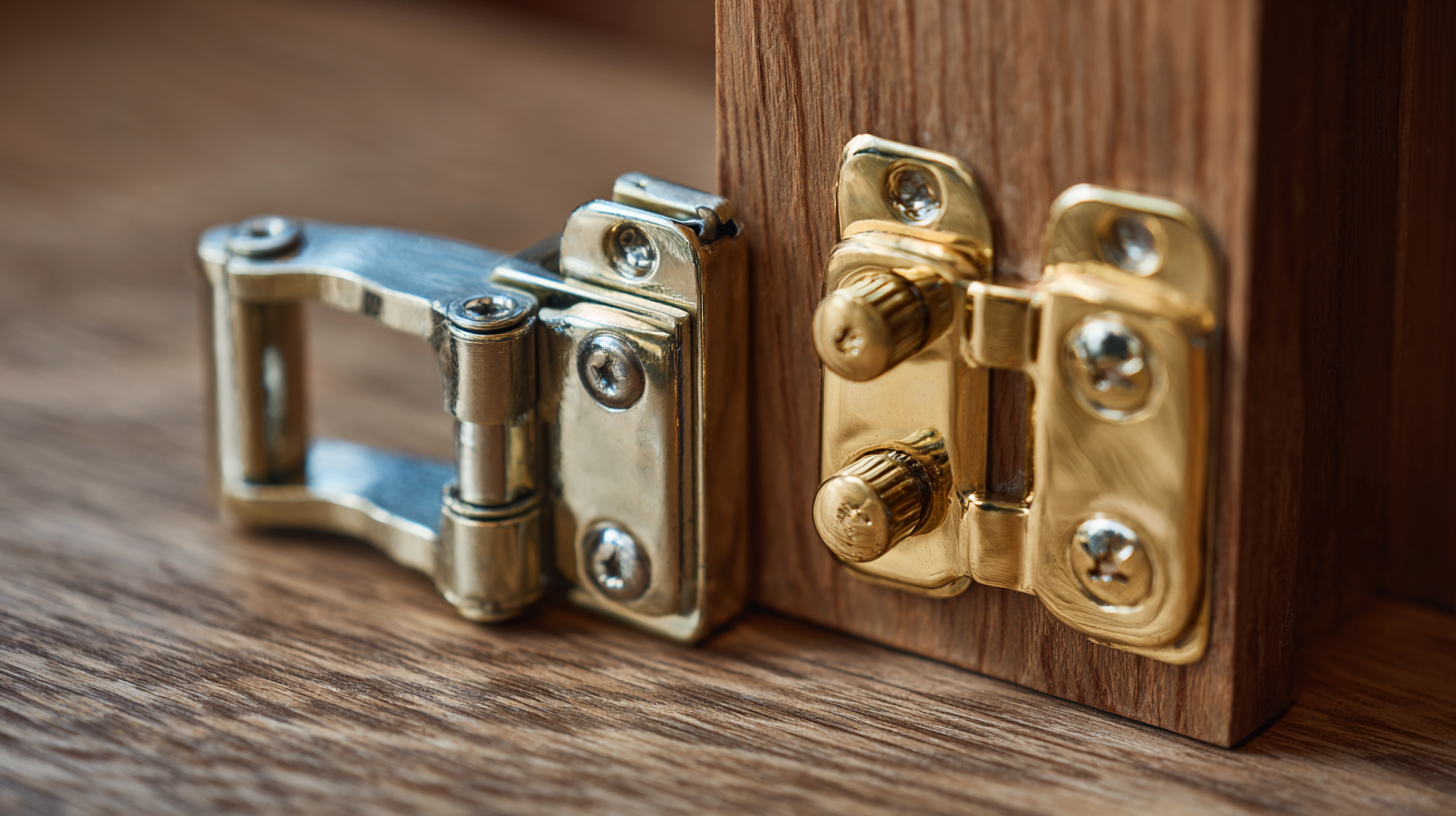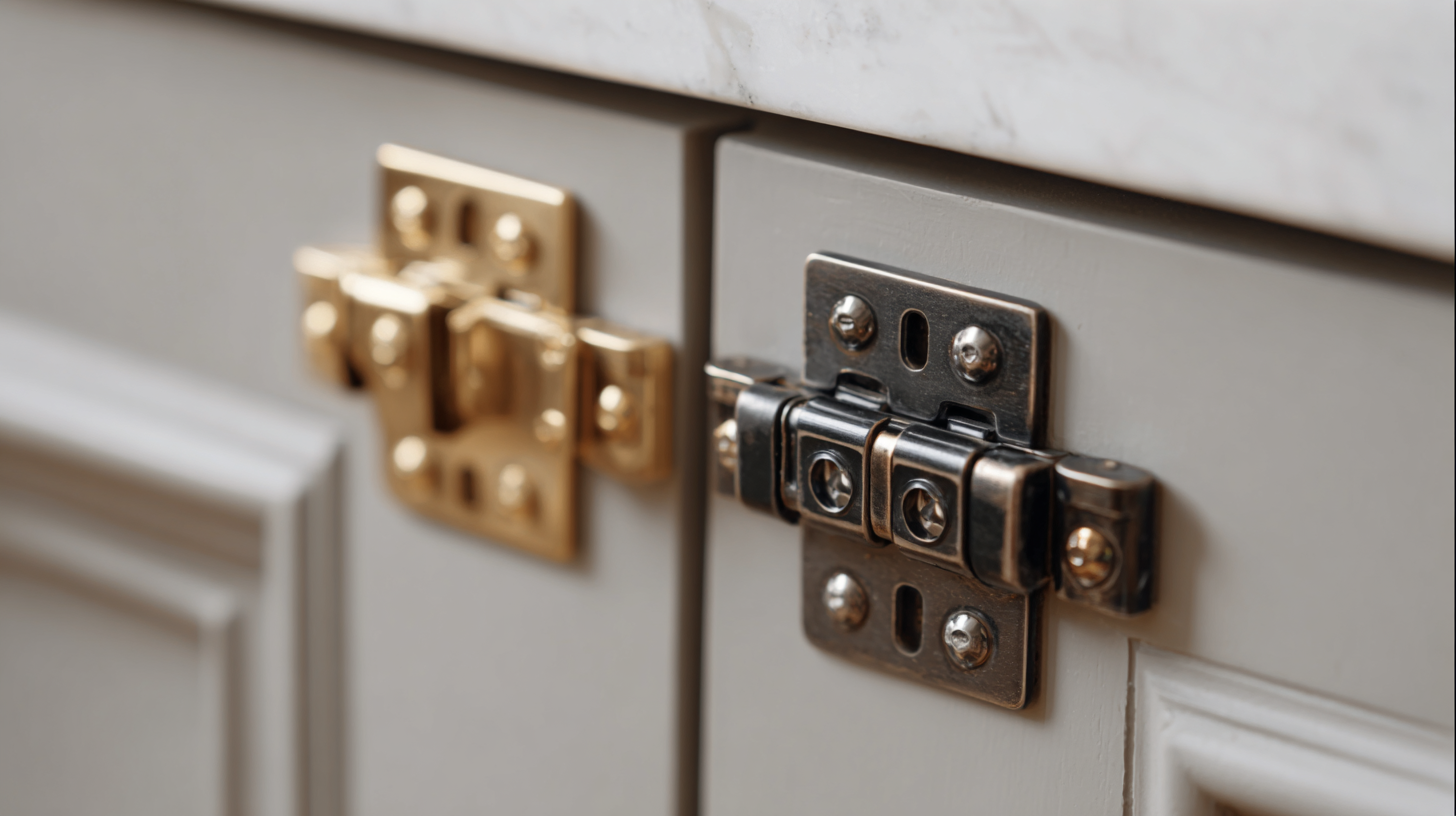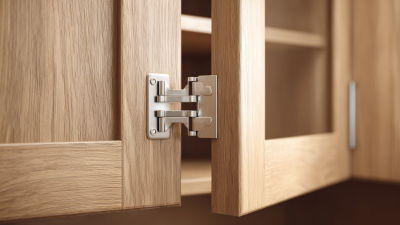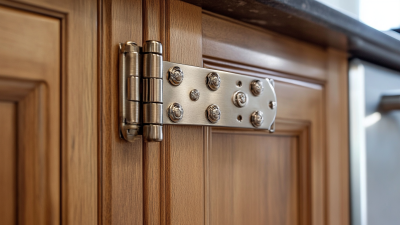Leave Your Message
When it comes to designing and renovating spaces, the importance of selecting the right components cannot be overstated, especially for essential elements like Cabinet Door Hardware Hinges. These components not only play a crucial role in the functionality and durability of cabinet doors but also significantly influence the overall aesthetic of your cabinetry. In a market saturated with numerous options, understanding the best practices for choosing these hinges is paramount for homeowners and designers alike. From assessing the material quality and weight capacity to considering design styles that complement your interior decor, selecting the appropriate hinges can enhance both operational efficiency and visual appeal.

This exploration will delve into essential considerations and tips to ensure that your choice of Cabinet Door Hardware Hinges aligns perfectly with your durability requirements and design aspirations, creating a harmonious blend of style and longevity in your living spaces.
When choosing cabinet door hardware hinges, understanding the various types available is essential for achieving optimal functionality and ensuring longevity. There are several categories of hinges, each designed for specific applications and aesthetics. For instance, concealed hinges, which are often used in modern cabinetry, offer a clean appearance while providing smooth, silent operation. According to a report by the Kitchen Cabinet Manufacturers Association, concealed hinges account for approximately 50% of the hinges used in contemporary kitchen designs, highlighting their popularity and effectiveness.
In contrast, traditional butt hinges remain prevalent, particularly in more classic or rustic cabinetry. These hinges are visible when the cabinet door is closed and can provide both durability and aesthetic appeal, especially in wooden cabinets. Industry data shows that butt hinges offer a weight capacity that supports doors up to 100 pounds, making them an excellent choice for heavier doors. Meanwhile, soft-close hinges have surged in popularity, delivering a quiet and gentle closure that reduces wear and tear over time. A survey conducted by Cabinet Maker Magazine revealed that 68% of consumers prefer soft-close mechanisms for their ability to enhance user experience and extend the life of the cabinetry. By carefully selecting the right type of hinge, homeowners can significantly enhance both the functionality and longevity of their cabinetry.
| Hinge Type | Material | Max Door Weight | Style | Cost Range |
|---|---|---|---|---|
| Concealed Hinge | Steel | 50 lbs | Modern | $5 - $15 |
| Piano Hinge | Stainless Steel | 100 lbs | Industrial | $10 - $30 |
| Overlay Hinge | Brass | 40 lbs | Traditional | $4 - $10 |
| European Hinge | Zinc Alloy | 60 lbs | Contemporary | $6 - $18 |
| Butt Hinge | Bronze | 75 lbs | Rustic | $3 - $12 |
 When it comes to selecting the right cabinet door hardware hinges, the material plays a crucial role in ensuring both durability and functionality.
Stainless steel is often regarded as one of the best choices due to its resistance to rust and corrosion. This makes it ideal for kitchens and bathrooms, where moisture levels can fluctuate. Additionally, stainless steel hinges can withstand heavy use, making them a reliable option for high-traffic areas.
When it comes to selecting the right cabinet door hardware hinges, the material plays a crucial role in ensuring both durability and functionality.
Stainless steel is often regarded as one of the best choices due to its resistance to rust and corrosion. This makes it ideal for kitchens and bathrooms, where moisture levels can fluctuate. Additionally, stainless steel hinges can withstand heavy use, making them a reliable option for high-traffic areas.
Another excellent material to consider is brass, known for its longevity and classic appeal. Brass hinges not only add an elegant touch to cabinetry but also resist wear and tear over time. However, it's important to choose solid brass rather than painted or plated options, as the latter may chip or fade after prolonged exposure to elements.
Tips: When selecting hinges, always check the weight rating to ensure they can support your cabinet doors. Additionally, consider the finish—polished or brushed options can enhance aesthetics while providing protection against scratches. Lastly, investing in soft-close or self-closing hinges can improve the overall user experience, preventing slamming and extending the life of both the hinge and the cabinet.
When selecting hinges for cabinet doors, it is essential to consider the overall design of your cabinetry. Hinges come in various styles and finishes, which can significantly impact the aesthetic of your cabinets. For modern designs, sleek and minimalist hinges in brushed stainless steel or matte black can enhance the clean lines and sophisticated look of contemporary spaces. In contrast, ornate hinges with intricate detailing may suit traditional cabinetry, providing a touch of elegance and charm that complements classic decor.
Functionality also plays a vital role in design considerations. For heavier cabinet doors, opt for robust hinges that not only match the style but also offer the strength needed for durability. Concealed hinges might be a perfect choice for a seamless appearance, as they remain hidden when the door is closed, thus highlighting the cabinet's design. Moreover, the angle of swing and ease of installation should also influence your selection, ensuring that the chosen hinges perform effectively while enhancing the visual appeal of your cabinetry.
When it comes to installing cabinet door hinges, ensuring proper alignment is crucial for both functionality and longevity. Misalignment can lead to issues such as uneven gaps, difficulty in closing doors, and increased wear on the hinges. Start by measuring the door and cabinet frame accurately to determine the ideal position for the hinges. Using a level and a square, mark the hinge positions clearly on both the door and the frame. Taking the time to get these measurements right will save you from the hassle of adjustments later.
Once you have your marks, it’s important to pre-drill holes to prevent the wood from splitting, especially in hardwoods. Use the correct screw size and type, ensuring they are long enough to secure the hinge firmly without protruding. During installation, attach the hinge to the cabinet first before mounting the door. This method allows for adjustments to be made more easily if the door hangs unevenly. Remember, a little patience during installation can lead to a polished look and enhanced durability of your cabinet doors.
Proper maintenance of cabinet door hinges is essential for ensuring their longevity and optimal performance. Regular cleaning is one of the simplest yet most effective strategies. Dust and grime can accumulate, causing hinges to function poorly. Use a soft cloth and a mild cleaning solution to wipe down the hinges, ensuring they remain free of debris.
Another important aspect is lubrication. Over time, hinges may begin to creak or feel stiff. Applying a suitable lubricant, like silicone spray or a lightweight oil, can help maintain smooth operation. It’s advisable to lubricate your hinges at least twice a year or whenever you notice any resistance when opening or closing the cabinet doors.
**Tips:**
1. For squeaky hinges, try using a bit of petroleum jelly applied directly to the pivot points. This can help silence any annoying sounds.
2. Regularly check for any loose screws, as tightening them can prevent misalignment and prolong the life of your hinges.
3. If you notice any signs of rust on metal hinges, remove any rust with a fine abrasive pad and apply a rust-resistant spray to protect against further corrosion.
By incorporating these maintenance strategies, you ensure that your cabinet hinges remain functional and visually appealing for years to come.







